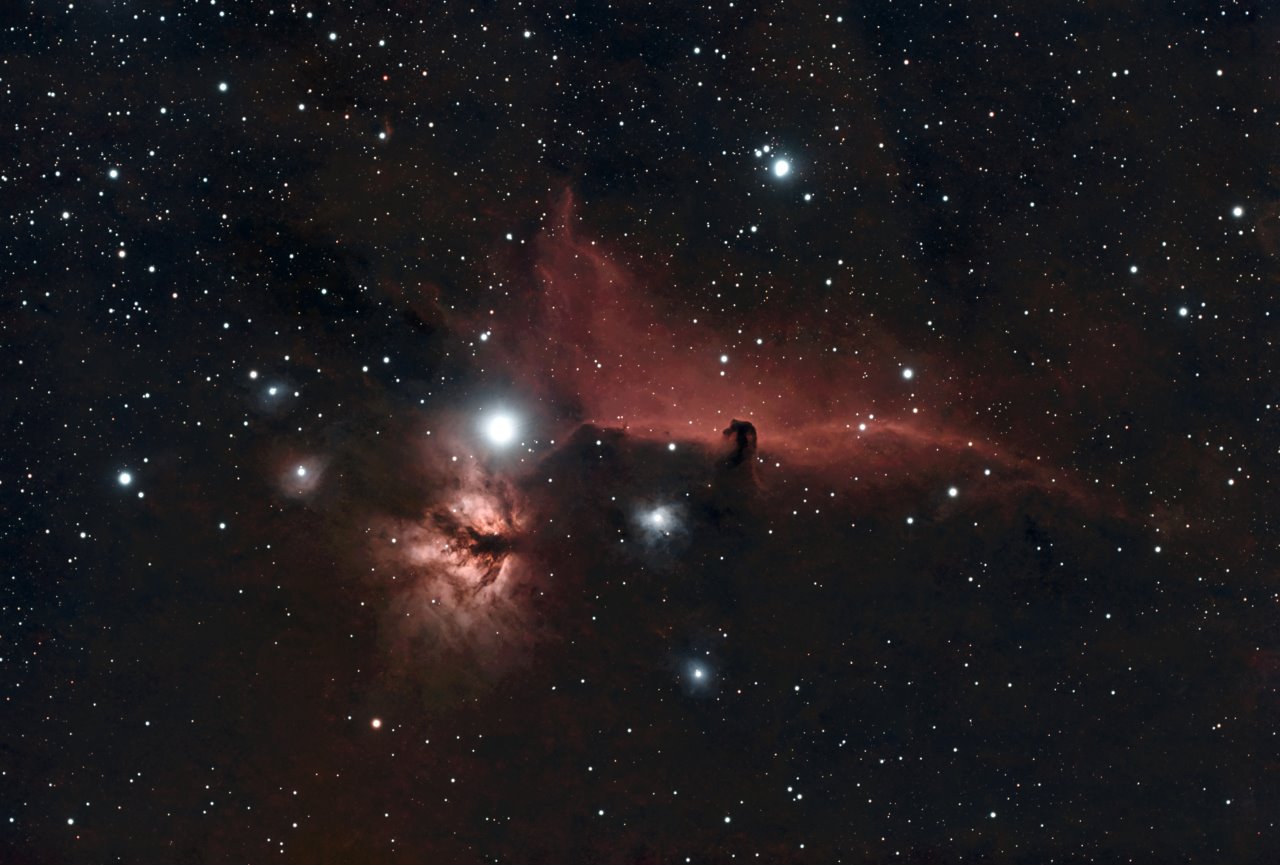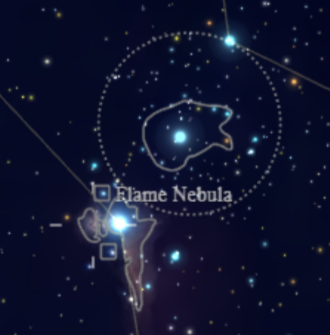Horsehead and Flame Nebulas
02/25/25
The Horsehead and Flame Nebulas – Sculpted Shadows in Orion’s Belt
The Horsehead Nebula (Barnard 33) and the Flame Nebula (NGC 2024) form one of the most visually dramatic and scientifically rich regions in the constellation Orion, just below the leftmost star in Orion’s Belt, Alnitak. These nebulae are part of the vast Orion Molecular Cloud Complex, a stellar nursery that includes the Great Orion Nebula (M42), the Running Man, and many other star-forming regions.
Both the Horsehead and the Flame lie approximately 1,350 light-years away, in a field of glowing gas, dark dust lanes, and intense ultraviolet radiation, providing a vivid display of the dynamic processes shaping our galaxy’s interstellar medium.
Distance and Location
- Distance: ~1,350 light-years
- Location: Just south of Alnitak (ζ Orionis), the easternmost star in Orion’s Belt
- Constellation: Orion
- Part of: Orion B Molecular Cloud (also known as Lynds 1630)
The Horsehead Nebula (Barnard 33)
The Horsehead Nebula is one of the most recognizable dark nebulae in the sky, its distinct horse-like shape silhouetted against the bright pink glow of ionized hydrogen gas behind it.
- Type: Dark Nebula (obscuring cloud of dense dust and gas)
- Size: ~3.5 light-years tall
- Background Illumination: The glow behind the Horsehead is caused by Hα emission from the larger IC 434 emission region, ionized by nearby massive stars.
The Horsehead is dense enough to block visible light, but infrared observations reveal young stars forming inside the cloud. The nebula’s iconic shape is the result of radiation erosion, where UV light from nearby stars (especially from Alnitak and Sigma Orionis) eats away at the gas, leaving behind denser, pillar-like structures.
The Flame Nebula (NGC 2024)
Located just east of the Horsehead, the Flame Nebula is a bright emission and reflection nebula powered by ultraviolet radiation from Alnitak, which lies just to its north.
- Type: Emission and reflection nebula
- Size: ~15 light-years across
- Features: The bright core is filled with dust lanes, which give the appearance of flame-like tongues extending outward from a glowing central region.
In the center of the Flame lies a young embedded star cluster with dozens of newly formed stars, many hidden in optical light but visible in infrared and radio wavelengths. The cluster is still partially cocooned in the dust and gas that birthed it.
Illuminating Stars and Energy Sources
Both nebulae are influenced by nearby hot, massive stars:
- Alnitak (ζ Orionis)
- Spectral Type: O9.5 Iab
- Temperature: ~29,500 K
- Luminosity: ~100,000 times the Sun
- Alnitak is part of a multiple star system and provides most of the ionizing radiation that lights the Flame Nebula and the background of the Horsehead.
- Sigma Orionis
- A multiple star system located just south of the Horsehead, contributing additional radiation to the region.
Project Details
-
Belleville, MI
-
ZWO FF65 telescope FL = 416mm, f6.4, Pentax K3ii, Antlia Triband Filter, 40 second subs, iso4000, 2h40m integration time



